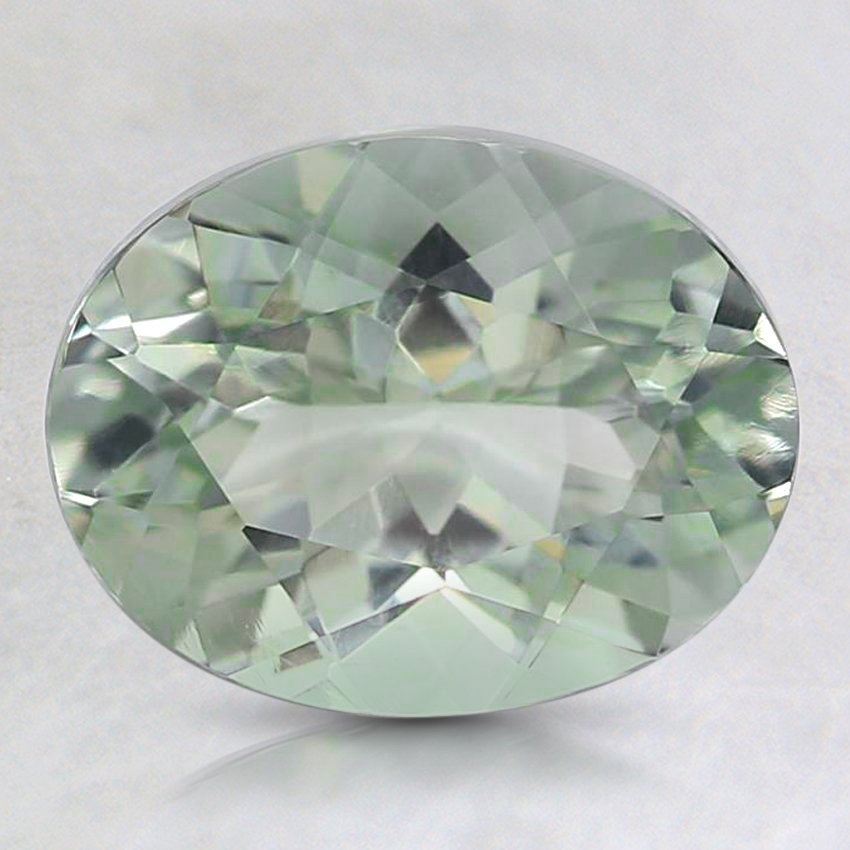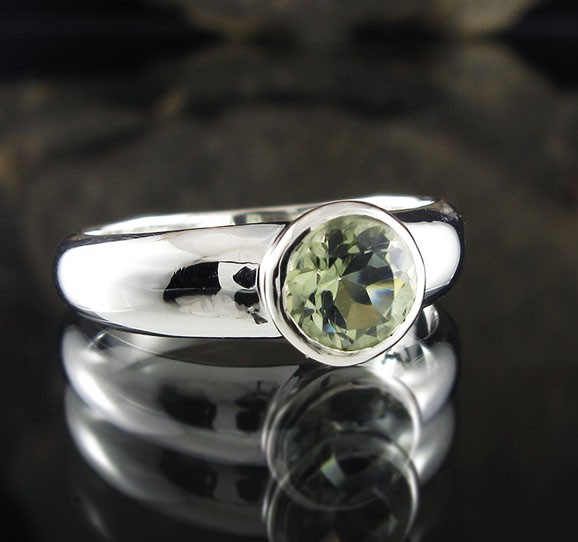
Colorless quartz is of course the most common variety. Besides prasiolite, smoky quartz and amethyst are also known from this locality. Prasiolite from this outcrop occurs in many different shades ranging from blueish-green and brownish-green to intense green. The amygdules filled by pure quartz are more resistant to erosion, and some have cracks between the quartz crystals display a pronounced irisation effect. Unfortunately the host rocks as well as amygdules are heavily weathered, so many of the specimens fall apart during extraction. Only ~10% of the amygdules at this locality contain prasiolite, and another 20% contain agate.

This new locality was found discovered during exploration for new agate occurrences in the area. In June of 2013, prasiolite was found in the same area, but in a completely new outcrop. Some of the amygdules are filled by quartz and chalcedony, or more typically, quartz pseudomorphs after barite. Two of these outcrops are located on the slopes of Łysa Góra (locally known as “za Pałacem” or “behind the Palace”). Prasiolite is known in the area from three different outcrops. This region is underlain by Permian basaltic trachyandesite, which is rich in amygdules in which both prasiolite and agate sometimes form. The most important outcrops in the Sokolowiec region are located between the villages of Sokołowskie Wzgórza, Łysa Góra, Gradowa and Sądereckie Wzgórza. One of them is Sokołowiec, which has produced agate specimens for several decades. The Nowy Kościół area is famous for numerous agates occurrences. Outside of Poland, prasiolite has been found in only a few localities, such as an area on the California border just north of Reno, Nevada (USA), and in the Amethyst Quarry near Thunder Bay, Ontario (Canada). They are particularly numerous in the proximity of Sokołowiec, where they are occur with and are genetically related to well-known agate occurrences. Although prasiolite from this area is a valuable geological material to researchers, its value to mineral collectors is much greater.ĭuring the last 10 years, new occurrences of olive-green prasiolite were found in the Kaczawa Mountains. Prasolite also frequently forms in the central parts of agate nodules. Such nodules are of an intense green color.

They form crystals that completely or partially fill amygdules embedded in porphyrtitic volcanic rocks. Lower Silesia prasiolite is mainly found in the vicinity of Płóczki Górne.

Scientists have proven that the green color in this variety of quartz results from the presence of Fe 2+ ions within the crystal structure. In 1990 an international team of Polish and Ukrainian scientists described for the first time specimens from the vicinity of Kłodzko and Płóczki Górne. The first natural prasiolite quartz was found in the Lower Silesia region of Poland. Irradiated green quartz eventually loses its color due to exposure to sunlight as well as to temperatures exceeding 150☌. A few tons of such artificially treated quartz is produced annually from Brazil. There are presently two main sources of prasiolite used for jewelry: amethyst from the Montezuma Mine in Rio Grande do Sul state in Brazil, which are heated to temperatures of 400-500☌ in order to obtain the proper green coloration, and yellowish quartz from various Brazilian localities, which are bombarded with 60Co isotope in order to obtain the ‘prasiolite’ color. Eventually this material was named prasiolite, from Greek prasinos – chive-green, and lithos – stone. At that time in the US, a few jewelers started to sell products with so-called “green amethyst” (artificial green quartz). The history of prasiolite can be traced back to the year 1950. The other green variety of quartz, adventurine, is non-transparent, and its color is considered to be allochromatic, resulting from the presence of intergrowths of green minerals, such as the chromium mica fuschite, chlorite, or actinolite. The color is idiochromatic in nature, resulting from the presence of Fe 2+ ions substituting for Si in the crystal structure. Prasiolite is an extremely rare transparent green variety of quartz.

This time we would like to share with you small interestesting find of very rare quartz variety - prasiolite. Prasiolite from Sokołowiec area, Kaczawskie Mountains, Lower Silesia, Polandīy Tomasz Praszkier, Piotr Kenis and Piotr Komza


 0 kommentar(er)
0 kommentar(er)
